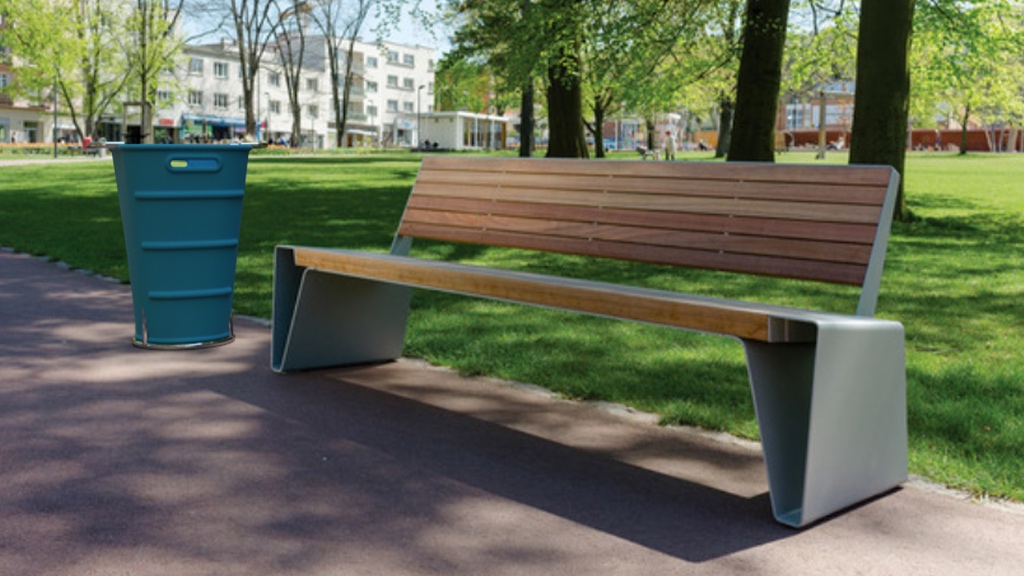ErgoService Bin
ErgoService Bin
Overview
The ErgoService Bin is designed as a modern trash-disposal device that reflects the future aesthetic of urban New York, provides additional ergonomic accommodations for sanitation-worker-interaction using human-centered design principles, and provides an environmentally-conscious means of repurposing industrial material through an in-depth material analysis.
Design Methodology
The initial concept was arrived at through ideation on how the current trash can could be updated to further inform users on interaction points using User Centered Design Principals and Universal Design. The ErgoService Bin has several key features informed from our design process and methodologies. Several critical requirements were chosen from the RFP. This included: materials that minimally impact the environment, ergonomic and anthropometric features that aided and empowered the sanitation workers, and a physical look and aesthetic that lives up to and ascends the current bins design for the next generations.
After setting these criteria, initial exploration went into the current trash can as well as studying the jobs of the sanitation workers. This was an iterative process to continuously check that our findings were consistent for the users and to check any assumptions we had made. The next phase was the design and brainstorming phase on how to marry the desires of the RFP with that of the user findings. This was done through sketches, renders, and physical prototype iterations. CES software was also used to perform a Level III EcoDesign material analysis to help us identify the materials that best met our requirements. We looked at the Young's modulus, yield strength, recyclability and down cycling, embodied energy, cost, and manufacturing methods. All of these findings and desires were expressed through several key features of our design also consistant with the 0x30 Zero Waste Initiative.
These critical points of our design include ribs on the side of the service bin, a durable metal frame, and handles on all four sides of the bin. The ribs aid and promote ease while dumping the bin by creating a ledge to grip onto the side of the garbage truck. Those ribs create a pivot point to aid the sanitation workers. The durable metal frames not only add weight to the bin, but also provides a sturdy surface at the critical interaction points. The ledge on the base allows for ease of tipping to promote the rotation movement that sanitation workers use to help move the bin towards the truck. The handles were designed for ease and comfortable grip while bringing the bin to the truck and also for the act of dumping regardless of the individual physical ability of the sanitation workers. Both materials were selected because of their individual economic and ecological superiority.
Using inspiration from residential, suburban trash cans, thisconcept is equipped with a handle and lower lip for foot interaction so that workers can leverage the weight of the trash bin to be easily slid or spun towards the current trucks. In addition, to aid the process of lifting the bin to empty its contents, an indention has been placed at the exact height of the trash trucks rim so that the weight of the full bin is distributed onto the truck as the worker tilts it over.
Manufacturing Analysis
The ErgoService Bin has an overall weight of 24 pounds specifically with 8 pounds of steel and 16 pounds of PVC (Type 1) and a volume of 42 gallons.
From initial design brainstorming, steel was chosen for its uniquely sustainable attributes; steel is truly and uniquely recyclable because it doesn’t lose its quality every time it is recycled. For the steel, ASTM A1011 low carbon steel exhibited the necessary high strength and high formability requirements necessary for the frame. At a yield strength of 340 MPA, it meets the city's current design's yield strength and exceeds the yield strength of other yield strengths. Unlike low alloy steel, low carbon steel has higher formability and cast-ability characteristics at a lower cost/kg at 0.65 USD/kg. Welding of the still will utilize E6011 electrodes for the necessary strength and common uses in the industry; the Navy BMR's cost for electrodes was utilized to arrive at an overall cost of 4 USD/can for welding of the steel rods. For the bending/stamping of the steel, [G1] Xometry Design Guide: Sheet Metal Fabrication Plug-in for SolidWorks evaluated our model’s steel production to cost a total of $45 per can.
Rotational molding is gaining recognition as an alternative to other plastic producing processes due to its low upfront costs and environmentally sound aspects. The process allows for more design flexibility than other plastic processes by not constraining molds by size and utilizing lightweight materials that do not require cooling. In keeping in line with the Zero Waste Design Guidelines, the process only utilizes the material necessary for production generating zero waste. For rotational molding, polyvinyl chloride (PVC) Type 1 was chosen due to its low cost at 1.80 USD/kg, recyclable, versatile, and recyclable attributes. The IPD Product Costing Guidelines helped us to achieve a total cost of $12/can for rotational molding production. For production, a swing arm machine is utilized due to its independent four mold carrying plates for cost effectiveness and environmentally friendly burners and heating chambers; the total cost for production per can is $62 USD.
Keeping in mind city contracts, the desire to manufacture in the US, and also accounting for currently unseen factors, a factor of 20% contingency was added to the design to account for changes moving forwards. Overall, the ErgoService Bin is more cost-effective than NYC's current design at $128.40 USD.





